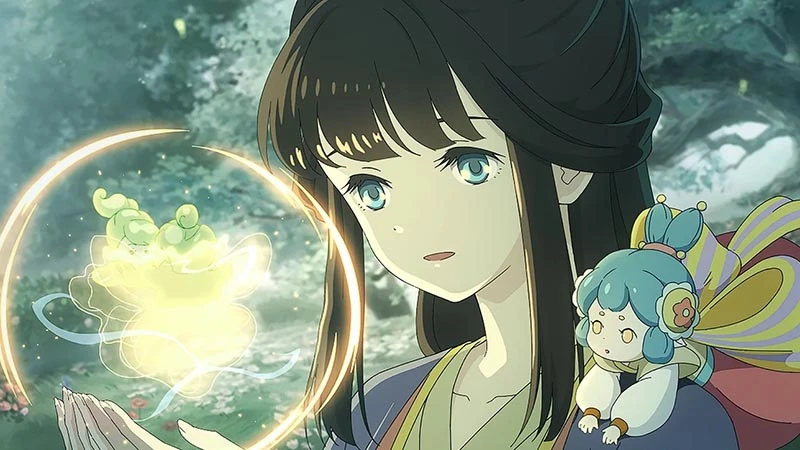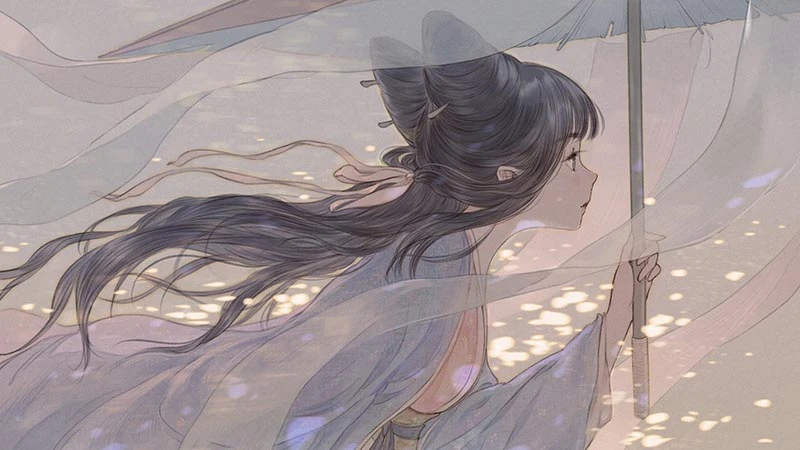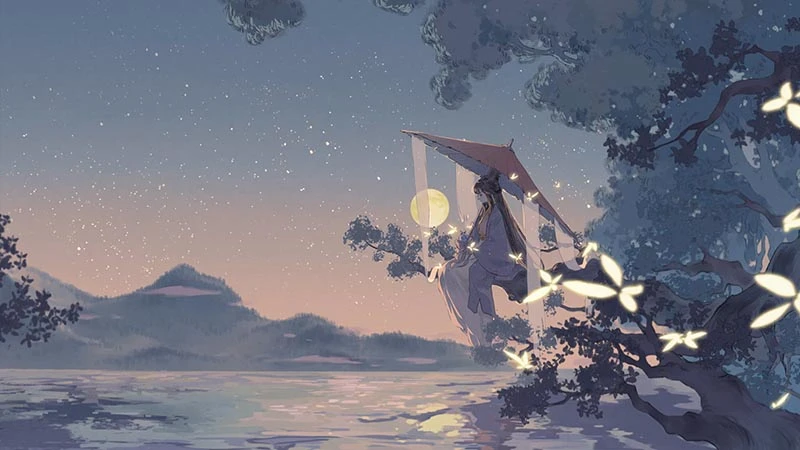In the vibrant world of Chinese animation, The Umbrella Fairy (伞少女) has taken center stage, weaving an enchanting tale that draws audiences deep into the heart of Chinese culture. Adapted from the award-winning original comic series The Umbrella Fairy’s Dream, created by writer Zuo Xiaoling (左小翎) and artist Wei Ying (魏莹), this animated film combines traditional aesthetics with a modern narrative that resonates universally. Lauded by both domestic and international audiences, this animated film highlights China’s rich tapestry of heritage, featuring traditional artistry alongside an original storyline that connects deeply with contemporary viewers.

From the moment the film begins, viewers are immersed in a mystical environment: the Cabinet of Sentiments, a repository of China’s rarest artifacts, each imbued with its own spirit, or "object soul." Through this magical cabinet, the film introduces the “umbrella spirit” Qingdai (青黛) and the “sword spirit” Wanggui (忘归), two mystical beings bound to serve and protect their historical treasures. Their bond is intense, rooted in Qingdai’s simple wish to remain with Wanggui in peace. But Wanggui’s quest for vengeance after her owner’s tragic fate pulls her out of this haven, compelling Qingdai and a young apprentice named Moyang (墨阳) to set out on an adventure to save her from a path of anger and retribution.
The film’s charm lies not only in its story but also in the intricate animation that draws upon elements of Chinese artistry. From delicate mountain landscapes to skillful wood carvings and finely crafted bronze artifacts, each frame feels like a love letter to Chinese heritage. This blend of hand-drawn style with modern animation brings the settings and characters alive, allowing audiences, whether familiar with Chinese culture or not, to connect with its distinct aesthetic appeal. The attention to detail and authenticity makes The Umbrella Fairy an unforgettable visual journey into the depths of Eastern art and philosophy.
The journey of Qingdai and Moyang is marked by encounters with a range of characters, both human and supernatural, who each contribute to their growth and understanding. As they navigate the challenges on their path, the film emphasizes the qualities of courage, wisdom, resilience, and kindness. These values are not only at the heart of the film’s characters but also reflect broader cultural ideals. Moyang, the eager apprentice, uses his creativity to overcome obstacles, while Qingdai’s unwavering determination inspires those around her to persevere despite the odds.
These elements are seamlessly woven into the story, and it is through Qingdai’s and Moyang’s growth that audiences can reflect on the personal struggles of transformation, self-realization, and forgiveness. While the narrative doesn’t stray from traditional ideals, its approach feels fresh, avoiding the common archetype of a simplified “villain” role. Wanggui’s character, driven by vengeance, is layered and relatable, showing that even darker paths are often rooted in pain and vulnerability. This nuanced portrayal of Wanggui leaves audiences empathetic, understanding her motives even if they do not condone them.
Beyond its compelling storyline, The Umbrella Fairy stands out for its dedication to preserving and celebrating China’s cultural treasures. Each item within the Cabinet of Sentiments, from symbolic umbrellas to ancient calligraphy, reflects a part of China’s historical and artistic legacy. Through Qingdai’s journey, audiences are encouraged to see these objects as more than relics; they are reminders of an ongoing dialogue between the past and present. In doing so, The Umbrella Fairy champions the preservation of cultural heritage, showing that history, when celebrated and honored, can inspire future generations.
This film provides a beautiful perspective on the preservation of intangible cultural assets, such as the art of ancient embroidery, calligraphy, and wood carving. These art forms, essential to China’s identity, are seamlessly integrated into the film's backdrop, from serene landscapes to scenes of bustling traditional architecture.



